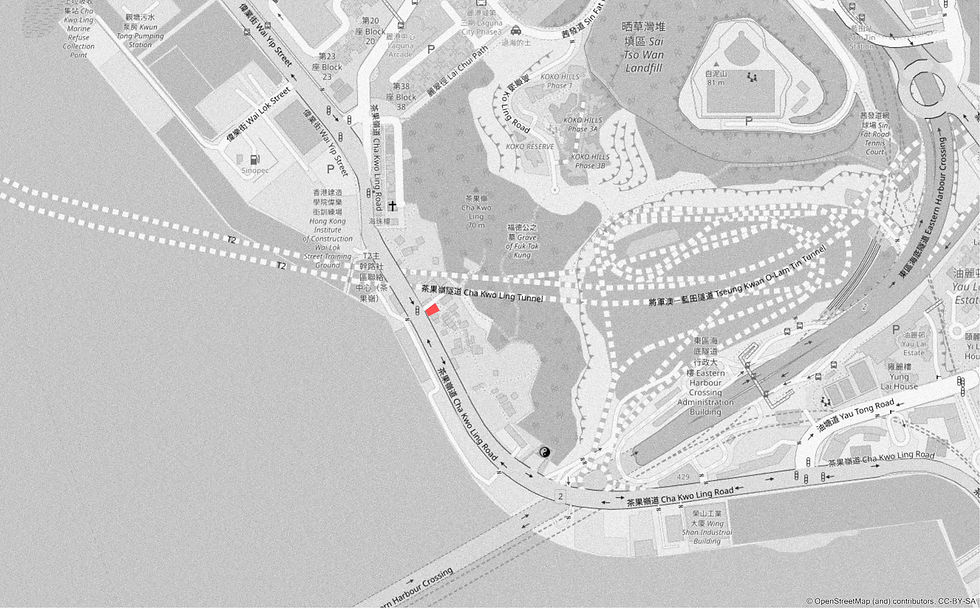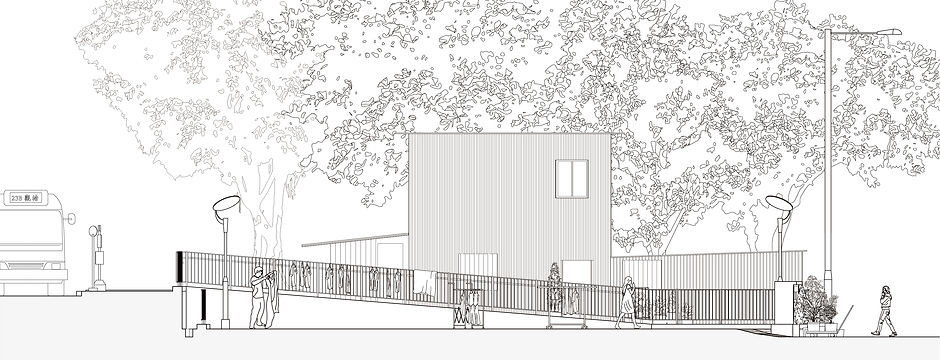
035
位置圖 Location
茶 果 嶺 村 休 憩 處
Cha Kwo Ling Village Sitting-out Area
茶果嶺村擁有超過百年歷史,同時為香港其中一個僅存的寮屋區,背靠前茶果嶺高嶺土礦場,見證了香港早期採石業發展。自香港開埠以後,各規模的基建和造城工程都需要大量的石材,因此採石和打石業逐漸興旺發展,越來越多的石匠從客家地區到此聚居。到1947年,蜆殼於茶果嶺設立油庫,大量的工人安家於此,茶果嶺村漸具規模,直至90年代油庫搬遷和石場關閉,古村沒落。休憩處位於前身為成立於1933年的香港磁泥有限公司的環保廢品回收站入口處。不同於其他休憩處,本休憩處為一個開放空地,只有斜坡連接馬路,沒有種植任何植物,長期地成為附近居民的曬衣場。附近的工人自發地在休憩處的入口培育和擺放綠植、盆栽,以點綴空曠的場地,期望實現從空地到花園再到共同家園的轉變。
Cha Kwo Ling Village has a history of more than 100 years and is one of the only remaining squatter areas in Hong Kong. It is backed by the Ex-Cha Kwo Ling Kaolin Mine Site and has witnessed the early development of the quarrying industry in Hong Kong. Since the founding of Hong Kong, infrastructure and city-building projects of all scales have required a large amount of stone, gradually helping the quarrying and stone-cutting industries flourish, attracting masons from Hakka regions to reside. By 1947, Shell set up an oil depot in Cha Kwo Ling where large numbers of workers had settled. Cha Kwo Ling Village steadily grew until the relocation of the oil depot and the closure of the quarry in the 1990s led to the old village’s decline. The sitting-out area is located at the entrance of the recycling station, which was formerly known as Hong Kong Clays and Kaolin Company, established in 1933. Different from other sitting-out areas, this area is an open space without vegetation, only with slops connecting to the road. It has long been a clothes-drying area for nearby residents. At the entrance, nearby workers have also spontaneously placed and grew plants and potted plants of the sitting-out area to embellish the open space, hoping to realise the transformation from open space to garden and to a common home.

剖面圖 Section

軸測圖 Axonometric







